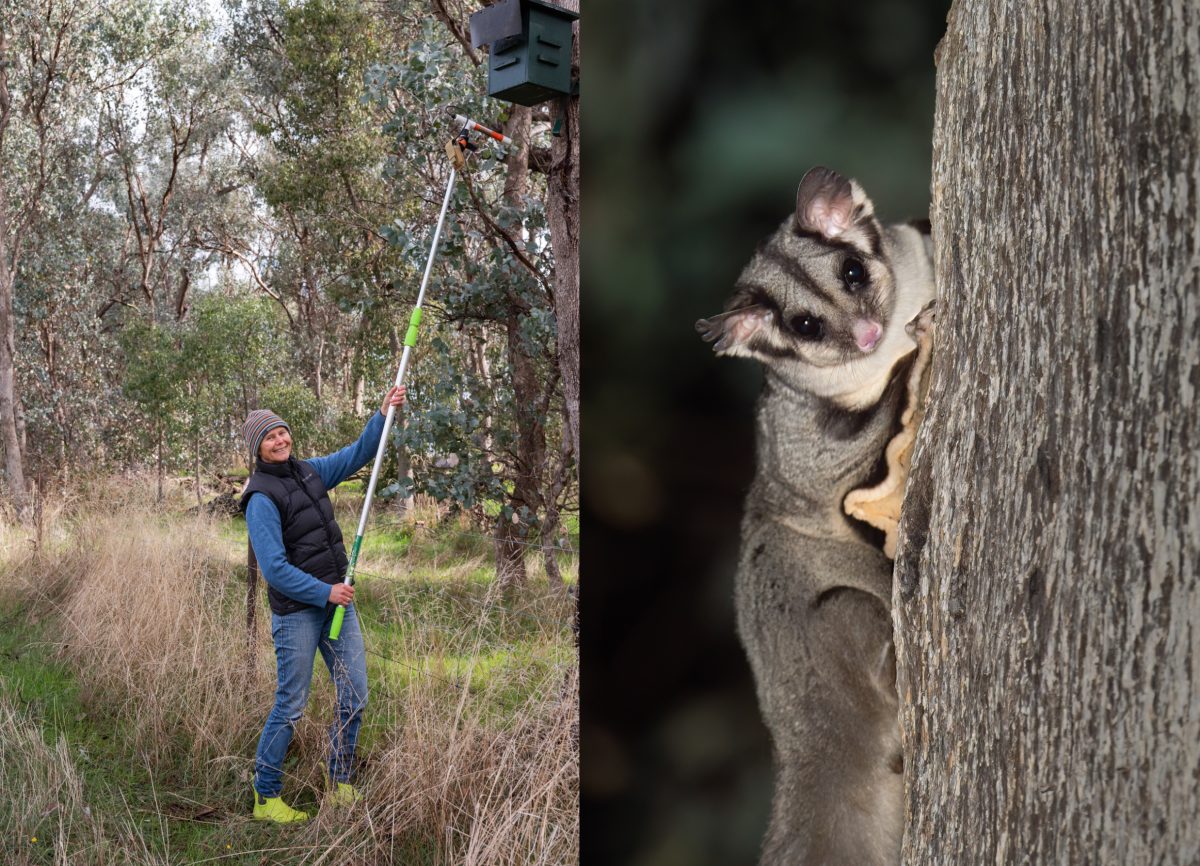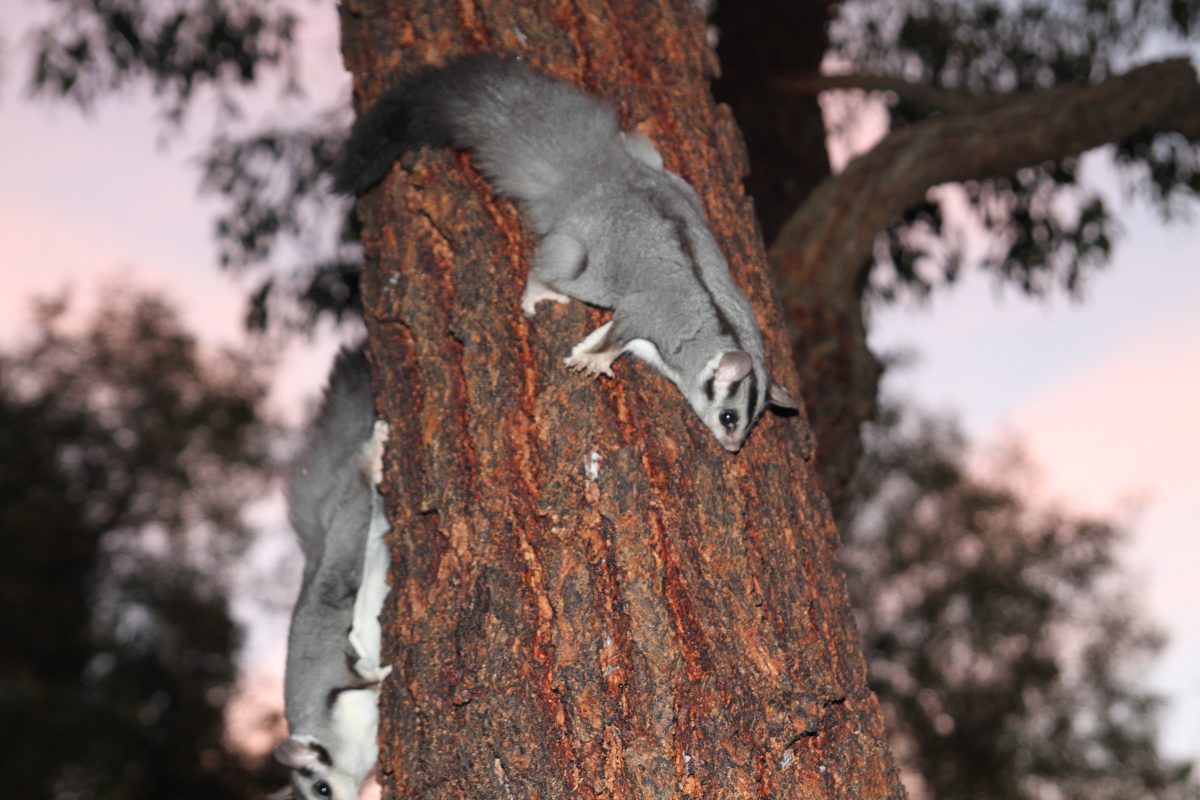
Lou Bull checks one of the installed squirrel glider nesting boxes and hopes to see numbers double. Photo: Janene Whitty Photography.
The future of the locally threatened squirrel glider is being celebrated this weekend with modelling predicting the population is set to double in future years.
An event to be held at the Wirraminna Environmental Education Centre in Burrumbuttock on Sunday (27 August) will highlight the efforts of the squirrel glider Local Area Management Plan (LAMP) group who say the vulnerable species is no longer quite so vulnerable.
Project officer Lou Bull has worked with the program for seven years and says there is a lot to love about the squirrel glider.
“The thing that I have personally loved about this project is that they are an easy animal to get behind,” she said.
“It’s not one where there are any reasons not to encourage them. It’s all positive.
“What we do for gliders has flow-on benefits for other animals. I’ve just come in before the rain came in and we were at a planting that we did for squirrel gliders and now grey-crowned babblers are using it and just before we got in the car a pair of superb parrots flew over.
“Three of our locally threatened species in one spot.”

Wirraminna Environmental Education Centre in Burrumbuttock. Photo: Supplied.
The squirrel glider occurs in areas below 600-m elevations and in the grassy box woodlands of the South West Slopes region.
Habitat fragmentation has contributed to their decline in the Murray region with large gaps between vegetation restricting their movement across the landscape and interrupting their breeding and feeding activities.
The purpose of the LAMP project is to secure viable populations in the catchment area through community action. So far there have been around 50 Burrumbuttock landholders supporting the conservation of gliders on their properties.
More than 160 hectares of land has been revegetated, barbed wire has been replaced with plain wire to decrease risk in areas where gliders can get tangled and some 142 nesting boxes have been installed in places that have emerging habitat but no hollows.
“We are celebrating this weekend as we know that the work we’ve done, based on the modelling, is showing that we are on track to double the population,” said Lou.
“The modelling is picking up that all the modifications in the landscape and the reconnecting of fragmented habitat means where gliders have been lost from, they can now go back to and breed.”

A pair of local squirrel gliders. Photo: Lou Bull.
You can find out more at the community event this Sunday, which is also celebrating the wattle tree, currently in full bloom at Wirraminna and throughout the Riverina. Speakers (between 10 am and 12:30 pm) at the event include Australian National University researcher David Smith, Matt Cameron, principal ecologist with the Department of Planning and Environment and Paula Sheehan, the local Landcare coordinator.
The day runs between 10 am and 3 pm.
Have you seen a squirrel glider? How do you identify one, where and when?
“Squirrel gliders are nocturnal so you will only see them at night. The best thing to do is find a large standing dead tree or a big old tree with lots of hollows – they are their critical habitats,” said Lou.
“If you find something like that on the roadside or on your property you should be watching at dusk, just when all you can see is the silhouette of the tree.
“Just wait and watch and if they are there they will emerge. They always scurry to the top of the tree and then they glide, they literally just launch themselves and glide across to the next tree.”
Squirrel gliders (Petaurus norfolcensis) are much smaller than brush-tailed possums, less than half their size. They have a massive bushy tail as big as their body. They are around 30 cm in length, very agile and move around trees very easily. They can also be mistaken for sugar gliders, however squirrel gliders are larger and have bushier tails and whiter bellies.
Wattle Day at Wirraminna and the squirrel glider community celebration event is being held on Sunday, 27 August between 10 am and 3 pm. Gold coin donations are appreciated. There will be kids activities, a sausage sizzle and guided tours.
You can find out more here.







